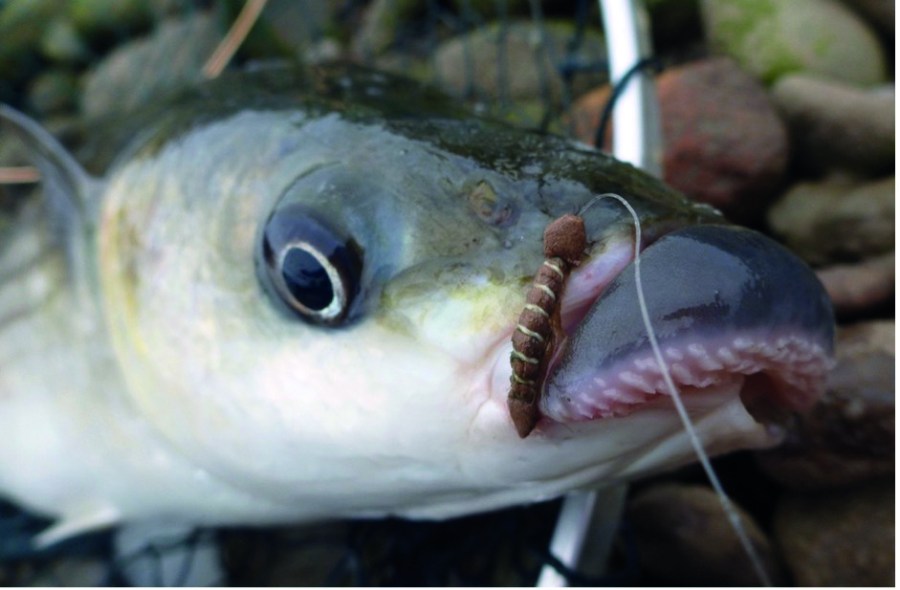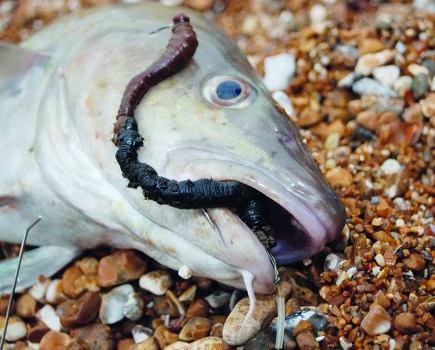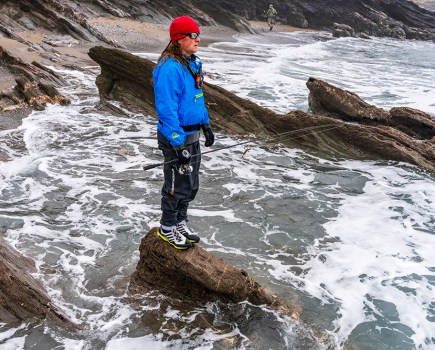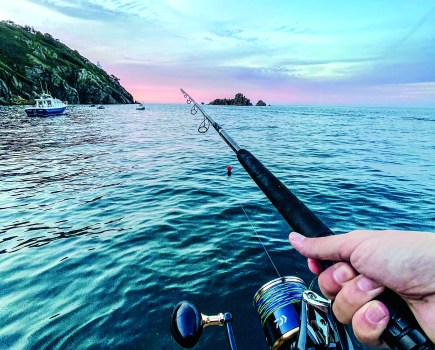Saltwater flyfishing is taking off in the UK, of that there is no doubt. An increasing amount of coverage is rightly being devoted to this productive method of sea angling in the mainstream angling press, with much discussion about its merits and the techniques and tackle needed.
However, surprisingly little has time has been spent on de-mystifying the business end of things, the flies themselves. There is, in any branch of lure fishing (and that is essentially what a fly is), a huge array of choice, verging on being bewildering.
The cost of an individual fly may not be high, but take it from me, the inevitable ‘kid in a candy store’ syndrome can kick in, and before you know it you’ve spent a small fortune on beguiling, enticing, intricate creations in every colour-variant and size imaginable.
It’s a compulsion driven by a combination of insecurity (“but what if the bass prefer olive and white to orange and black? I’d better get both in all the sizes, just in case”) and plain old gut feeling (“Oh, now surely that must catch fish. It looks so, well, fishy!”).
In reality, if you go in blind, you acquire a huge selection, spend an inordinate amount of time chopping and changing patterns out on the water, before eventually coming to realise that, despite all the myriad types and variants you have with you, you’re actually only consistently catching on a small handful of these.
To save a lot of time let’s try and whittle this down a bit, to at least get you started. Of course, debate over precise patterns will rage until the end of time, as everyone has their favourites, but this will give the novice or first-time ‘swffer’ a considerable shove in the right direction.
Let’s start with the basics: what constitutes a fly, exactly? In very broad terms it’s a lure made from fibres, feathers and thread, tied directly onto a hook in order to imitate a natural food source for your target quarry.
Of course, these days an ever-increasing amount of synthetic materials are replacing natural ones in fly design, resulting in flies that look just as good, if not better, will cast more easily, and are often more durable, but essentially the general construction remains the same.
There are some purists out there who will argue that once you get beyond a certain point, a fly is no longer a fly, and therefore you are lure fishing, not swffing.
If you are curious to see what can spark considerable heated debate on this issue, look up ‘Gummy Minnow’ online. To my mind, it’s an effective fly pattern in the right application, but to many it is not really a ‘fly’ – indeed some get pretty animated about it!
Moving on then, you definitely need to know your Clousers from your Gurglers! Much like hard bass lures, flies can be broadly broken down into three categories: surface, unweighted, and weighted.
Note that I avoid the ‘slow-sinking’ and ‘fast-sinking’ terminology that we use with hard lures. This is simply because where you put the fly in the water column is as much dictated by the line you use as by the fly itself.
OK, so you need flies in each category. Why? Simply so you have something that’s best suited to wherever the fish are feeding. To keep things simple, let’s start from the top – literally!
1. Gurgler (surface)
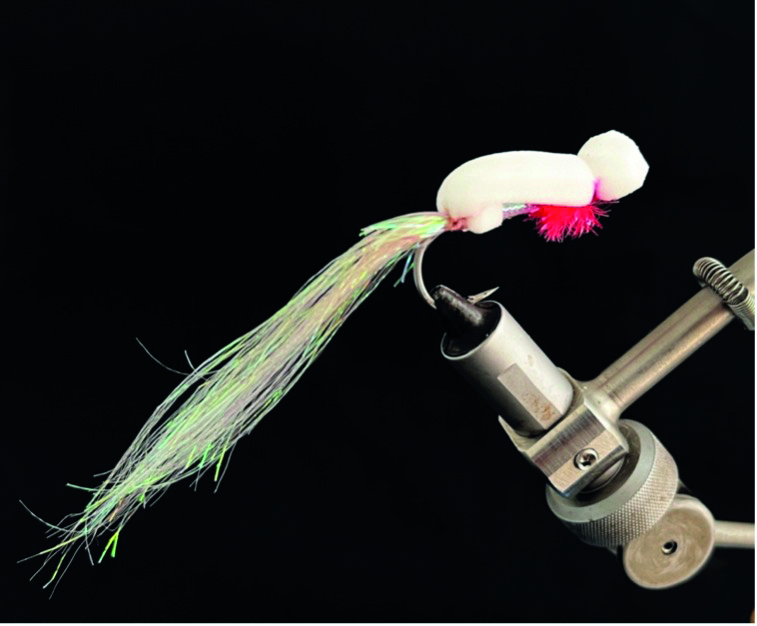
Gurgler Fly for the surface
This is the fly equivalent to a popper lure. A gurgler is characterised by the buoyant, foam, body that runs along the top side of the hook shank and ends in an up-turned lip at the eye of the hook.
It usually has a scruffy under-body and a tail of sorts, and to be honest, rarely looks particularly life-like; at least not to anything on this planet. But that’s not the draw here.
Like a popper, the Gurgler is all about water displacement, splash and noise. As the fly is retrieved in sharp jerks across the surface, the lip at the front creates a little splash, broadcasting a ‘baitfish in distress’ signal to any waiting predators.
It is particularly effective in calm water where that signal is not diluted by surface wavelets, and when water clarity or visibility is low, and fish like bass are drawn in by vibration rather than hunting by sight.
As a result, it’s also a good night-time pattern too. Obviously, if bass or mackerel are hitting baitfish right on the surface, the Gurgler is an automatic choice, and it is thrilling to get marauding shoals visibly hitting your fly right on the top.
Definitely one of the most fun patterns in the flybox! Try it in white (perhaps with some silver or red) for the daytime and all black or black and red for the night.
You may not use it a lot, but when you see fish busting on the surface in front of you, you’ll be glad you’ve got it!
2. Surf candy/sandeel patterns (Unweighted – fished throughout the water column)
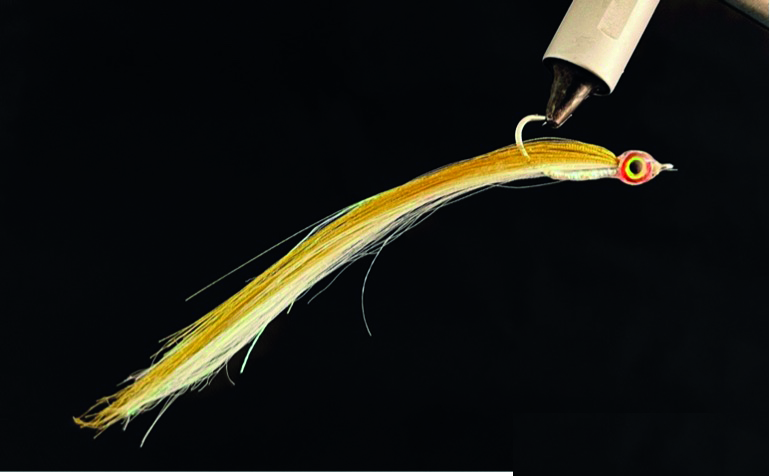
This type of fly has proven its worth as a killer pattern for bass for many years, and certainly no swffer should be without them! Essentially, these are sandeel imitation patterns.
My favourite is a version called the DNA Baitfish. It gets its name from the material it’s made from – a mix of two synthetic fibre blends, called DNA Holofusion.
These particular materials create a wonderfully glittery, translucent, slim fly, with plenty of body movement. With large red and black eyes, the DNA Baitfish is remarkably lifelike when jigged through the water, and almost irresistible to any saltwater predator that fancies the odd sandeel on its menu.
Being unweighted, the fly is fished at depths dictated by the weight of the flyline itself, but it is generally accepted to be a shallow-water or near-surface pattern fished on a floating line.
Colour-wise, a realistic Olive and White is hands-down the best.
3. Rays Mullet fly or Mullet Bach (unweighted, shallow water)
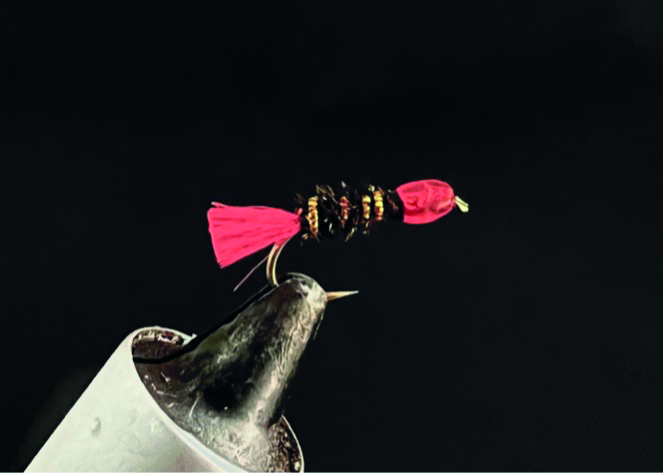
Rays Mullet fly or Mullet Bach (unweighted, shallow water)
Another essential. This tiny fly, usually a size 12, consistently racks up fish after fish. Originally a variant of a traditional Welsh trout fly called the Diawl Bach, the Rays Mullet fly (or Mullet Bach as its sometimes called) is a peculiar little offering.
The supposition is that it is mistaken for a small shrimp (corophium volutator), common around our muddy shores.
Whilst small, these little crustaceans are sometimes present in huge numbers, and bass, mullet and flatfish regularly make them a part of their diet. Indeed, all three species take this fly (five species if you differentiate between all three mullet types).
What’s more, don’t underestimate the small size of this fly; I’ve seen bass to 6lb, and mullet to 8lb, landed on this pattern! Being small and unweighted, this is a pattern fished in shallow water or in the top two feet.
By shallow, I mean anything down to 6 inches, where surprisingly large fish can be found digging about for the little shrimp it imitates.
One notable feature about the pattern is the inclusion of one or two bright red beads at the ‘head’. It’s thought that the red provides a strike point, and helps the fly stand out amongst the natural food, making it a more obvious target.
In fact, the inclusion of a little red is a common theme in many saltwater fly patterns. As an aside, I’ve found garfish find this hard to resist too!
4. The Tagged Romy’s Sandshrimp (Unweighted, shallow water)
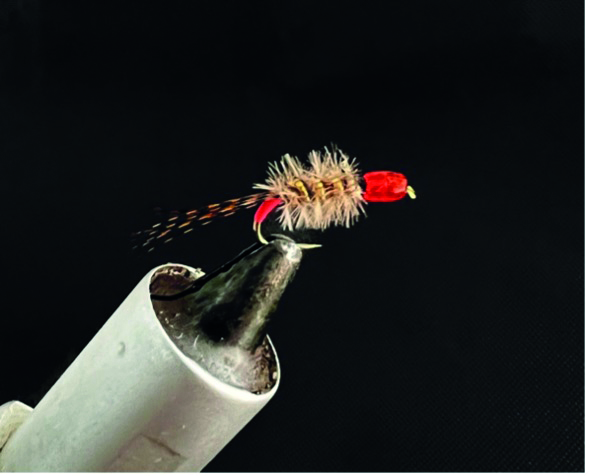
Right up there with the Ray’s Mullet fly, the ‘Romy’s’ has landed more fish than you can shake a rod at!
A relatively recent addition to the swffer’s armoury, the little glittery, gold, shrimp imitation also has a fluorescent red ‘tag’ at the head-end. Much like the Ray’s fly, the inclusion of a splash of red definitely increases the hit rate.
Interestingly, mullet are capable of seeing colours in the ultraviolet spectrum, so the fluoro coloured tag is thought to positively beam out the ‘dinner is served’ message to peckish shoals.
It’s especially effective for thin-lips and golden greys in shallow water with a pale or sandy bottom.
A darker version, the Spectrashrimp, is the go-to pattern for brooding thick-lipped mullet feeding over mud (red-tagged or with blue ‘feelers’). Again, don’t think these patterns are limited to mullet…
Bass will hoover them up. I’ve watched the dark shape of a lurking bass missile across ten metres of shallow just to hit one of these tiny flies – their eyesight must be extraordinary!
It’s one of the great thrills of saltwater flyfishing – presenting flies in clear shallow water and being able to see the reaction with absolute clarity. Nothing sets an anglers heart beating faster!
5. Clouser Deep Minnow, or ‘Clouser’ (Weighted – mid-water or even on the bottom)
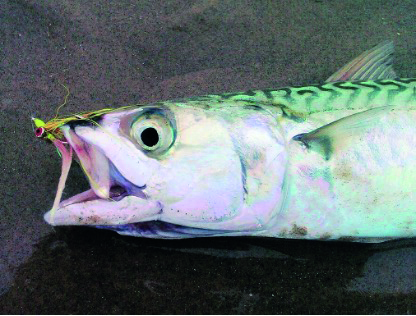
Clouser Deep Minnow, or ‘Clouser’
(Weighted – mid-water or even on the bottom)
Invented by American fly tier Bob Clouser, this simple weighted pattern composed of usually just two colours of bucktail fibres, a few strands of flash, and some brass or chrome dumbbell ‘eyes’, is one of the most universally used saltwater baitfish patterns there is.
The Clouser has been gracing fly boxes the world over in a myriad of colours for decades, and it is no less effective a pattern now.
The little metal ‘eyes’ tied in towards the front of the fly on the underside mean that the fly fishes point-up (helpful over rough terrain), and adopts an enticing darting, diving movement as it’s retrieved sink and draw style.
Of all the colours you could possibly have, by far the most consistent catchers in UK waters are:
- Olive and white (good for bass and mackerel in daytime)
- chartreuse and white (effective at dawn and dusk)
- orange and black (great for pollack and wrasse over rocks and kelp)
- all-black at night.
Even golden grey mullet and flatfish will take a smaller Clouser, so perhaps this pattern more than any should be the very first one to start your inevitable collection.
But what about…
Before anyone already familiar with swffing spits out their tea in indignation because I’ve not included one of their top five, these are simply the flies that have worked best for me and the fellow swffers.
I’ve fished with along the south coast of England and Wales. With the coastline of the UK being as vast and varied as it is, there will no doubt be devastatingly good patterns that haven’t made my own top-five cut.
Certainly, I would include the Deceiver, the Flexi-worm and the Ghostbuster as close runners-up, all deadly on their day.
Size matters
You may have read the above and noted that I’ve omitted to mention anything about the size of the flies on three out of the five general patterns.
Well, it’s a topic that always sparks debate, that’s for sure! There are two opposing thought processes here; ‘bigger the fly, bigger the fish’, and ‘one more wafer thin mint’ for those familiar with the Monty Python sketch.
Personally, I tend to subscribe to both! For me it really depends on what’s happening at the time. If bass are blitzing sandeels in the shallows, I would tend to start at a size 2 and see what happens.
If my fly is being repeatedly snatched by smaller schoolies, I may ramp up to a 1/0. Some people may work the other way round and start big.
I like to get a few fish taking first to make sure the pattern is proving itself attractive. Alternately, if mullet and bass are grubbing around in 10 inches of water in the margins.
I would forget a large fly and go down to the little patterns to imitate the shrimp or worms they are likely feeding on. Let the choice of fly be dictated by your best guess at what your quarry is (or is likely to be) feeding on, then you can tweak the size to suit.
Interestingly, there’s an area of overlap into the world of LRF here too; small flies like the shrimp patterns and weighted Flexi-worms are proving to be perfectly suited to being fished on LRF kit, and flies like Clousers are even catching on drop-shot rigs!
Dark matters!
You may have picked up on the fact that flies best suited to use at night are, in fact, black! That would seem contrary to common sense.
Surely they’d need to be as visible as possible, and black is the last colour you’d use? In fact, it makes perfect sense. At night, the only light available for hunting fish is moon and star light.
The best way to use such little illumination is to position yourself so your prey is between you and the light-source, therefore exposing its silhouette.
In that respect, a bass or pollack looking up will see the distinct silhouette of a black fly against the sky far more clearly than a pale one, so the rule is simple – when it’s dark, go dark!
When all’s said and done, the dizzying range of flies available for purchase by the aspiring swffer will often herald surprising successes and the inevitable exceptions that prove the rule, but these five basic patterns should form the essential core of your collection.
A quick Google search will give you options on where to buy these patterns. Of course, if you get into tying your own flies, then the variations on a theme are almost endless, but if not, try these five. You won’t be disappointed

